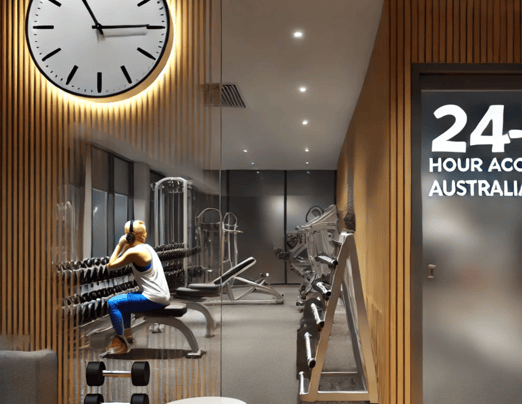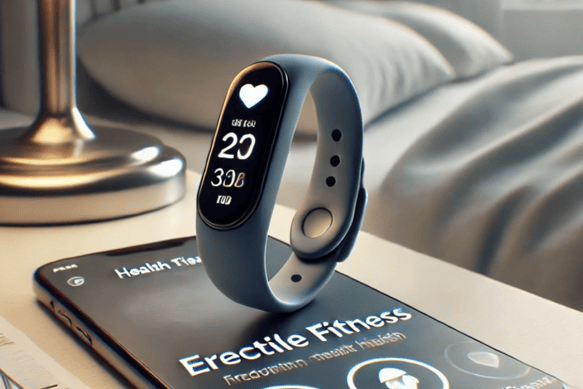Breaking Down the Trends and Innovations
The 7 Biggest Health and Fitness News Stories of the Past Week
11/18/20246 min read


3. Executive Biometric Retreats Combine Wellness and Science
As workplace stress increases, executives are turning to luxury wellness retreats that blend relaxation with high-tech, science-driven approaches to health. At locations like Canyon Ranch’s Longevity8 program in Tucson, Arizona, and Goodwood House’s Reset Retreat in the UK, participants undergo comprehensive health assessments involving over 200 biomarkers. These retreats, priced at upwards of $20,000, offer insights into personal health metrics, covering everything from sleep and hydration to physical resilience.
The Wellness Programs: These retreats combine biometric testing with personalized wellness plans that include low-tech, nature-based activities shown to boost creativity and reduce stress. Participants not only receive valuable insights into their health but also gain tools and lifestyle advice they can continue after leaving the retreat.
Why It Matters: These high-end retreats highlight a growing trend toward preventive healthcare and personalized wellness, catering to those willing to invest in their health to prevent burnout. As wellness science advances, we may see a greater push for affordable, science-backed wellness programs for a broader audience.
4. Gyms Scramble to Meet the Strength-Training Demand
Gyms across the U.S. are facing a major shift in demand as more people gravitate toward strength training over cardio. Activities like squats, deadlifts, and other resistance exercises have become increasingly popular, leading to crowded weight areas and unused cardio equipment. This trend reflects a growing awareness of the benefits of strength training for longevity, mental health, and physical resilience, particularly post-pandemic.
Challenges for Gym Owners: Renovating to add more squat racks, benches, and weightlifting equipment is costly and logistically challenging, as it often requires significant changes in layout and equipment investments. However, gyms that can adapt quickly are finding that strength-focused setups appeal to a new generation of fitness enthusiasts.
Implications: The popularity of strength training is pushing gyms to rethink their layouts and services, favoring more versatile equipment and personalized workout spaces. Additionally, the rise of specialized “muscle gyms” is expected to continue as strength training proves its staying power.
5. Minimal Daily Exercise Can Dramatically Lower Cancer Risk
A recent study published in JAMA Oncology suggests that just four minutes of vigorous exercise per day can reduce cancer risk by 20%. Increasing the exercise to ten minutes a day further cuts risk by 30%, while three short bursts throughout the day lower mortality from cancer by 40% and reduce heart disease deaths by 50%.
Expert Insights: Dr. Layne Norton, a fitness expert, explained that brief bursts of exercise improve glucose metabolism, blood lipid profiles, and reduce inflammation. He emphasized that even short, regular exercise routines can have significant benefits for both physical and mental health.
Why It Matters: This study is groundbreaking for individuals who struggle to commit to lengthy workout sessions. Knowing that even a few minutes of high-intensity movement can make a difference may motivate people to integrate more physical activity into their daily routines, potentially impacting public health on a larger scale.
Health and fitness continue to be dynamic fields, with new research, trends, and technological innovations constantly emerging to shape how we approach wellness. This past week brought some major updates in the industry, from the evolution of gym chains to groundbreaking studies on exercise and disease prevention. Here’s a comprehensive look at the seven most impactful health and fitness stories from the past week, exploring their implications for both individuals and the industry.
1. Planet Fitness Challenges Pure Gym for Ownership of Blink Fitness
The recent bankruptcy of Blink Fitness has set off a bidding war between Planet Fitness and UK-based Pure Gym, each looking to acquire the struggling gym chain. Blink, which operates around 60 locations across the U.S., was hit hard by pandemic closures, leading to its eventual filing for Chapter 11.
In a surprising move, Planet Fitness submitted higher bids, offering $141 million and later $153 million, to take over Blink. However, Blink’s debtors favor Pure Gym’s offer due to its perceived stability. The bankruptcy court in Delaware will soon make the final decision.
What This Means for the Industry: If Planet Fitness secures the acquisition, it could strengthen its presence as one of the most accessible gym brands, potentially leading to competitive membership pricing and greater accessibility for users across various locations. However, Pure Gym’s entry into the U.S. market could also shake things up, introducing new competition in budget-friendly fitness options.
2. Australians Prioritize 24-Hour Access in Gym Memberships
A recent Canstar Blue survey has revealed that a significant 62% of Australians prefer gyms with 24-hour access, valuing the convenience of flexible workout times. Other gym features like group fitness classes (37%) and locker room amenities (35%) also play essential roles in membership choices. Interestingly, while many Australians aspire to use their memberships often, a substantial 22% report underutilizing them.
Top-Rated Gyms in Australia: The survey named Fernwood Fitness, a women’s-only gym, as the top-rated choice due to its positive atmosphere, supportive staff, and flexible options. Other highly rated gyms included Revo Fitness and F45, both known for their group classes and community-focused environments.
What This Means for Gyms Worldwide: The findings highlight a global trend toward convenience, with 24-hour access becoming increasingly popular as people seek more flexible fitness options. Gyms that can cater to non-traditional hours may see higher membership retention and improved satisfaction.


6. Biometric Device Tracks Male Health Through "Erectile Fitness"
The FirmTech Tech Ring has launched in the UK, providing a new way for men to track their health by monitoring “erectile fitness.” This device, priced at £220, measures blood flow during nighttime erections—a natural process that can indicate cardiovascular and nerve health. The device sends data to a companion app, allowing users to track patterns that may signal underlying health issues like high blood pressure, diabetes, or other cardiovascular concerns.
Why It’s Relevant: Erectile dysfunction is often linked to broader health issues, and monitoring erectile function can help detect problems early. Health professionals point out that conditions like high blood pressure, often called “the silent killer,” may show early signs in sexual health, making the Tech Ring a potentially valuable tool for preventive health monitoring.
Implications: This device highlights the intersection of sexual health and overall wellness, showing how technology can provide early insights into conditions that may otherwise go unnoticed. It underscores the importance of comprehensive health monitoring for men and the need to address stigmatized health issues openly.
7. New Study Challenges Link Between BMI and Fitness Levels
The University of Michigan recently released a study challenging the common belief that higher BMIs correlate directly with poor health and fitness. In this study, participants with a BMI over 30 who exercised regularly were found to have healthier fat tissue and better metabolic profiles than their sedentary counterparts.
Case Studies: Individuals like Michelle Thomas and Katrina Rohman, who maintain active lifestyles despite higher BMIs, illustrate that fitness levels can be high even in people with higher body weights. This challenges the traditional view of BMI as a primary measure of health, suggesting that factors like muscle mass, activity levels, and genetic predispositions play a larger role than previously understood.
Why This Matters: This study encourages a shift toward a more nuanced understanding of health metrics, emphasizing the importance of physical activity over weight alone. It supports a growing movement in health and fitness toward individualized assessments, helping people to adopt healthier lifestyles without focusing solely on weight.
Final Thoughts: The Evolving Landscape of Health and Fitness
Each of these stories reflects significant shifts in health and fitness, from the way we measure wellness to the equipment we value most in the gym. The growing popularity of strength training, the interest in flexible and accessible fitness options, and the move toward holistic health assessments highlight a broader trend toward personalized and comprehensive approaches to health.
As these trends continue to evolve, staying informed about the latest research and innovations can help individuals make better health decisions. Businesses and fitness professionals can also use this information to adapt their services to meet modern demands.
Stay Updated with the Latest Health and Fitness News
To stay on top of these exciting developments, sign up for our newsletter! Get weekly updates, expert insights, and practical tips on fitness and wellness delivered straight to your inbox. Join our community of health-conscious readers and take charge of your well-being with the latest in health and fitness news—subscribe today!
Sign up below and get your FREE Ebook " The HIIT Revolution”
